Welcome to Pocketful of Prose, a community for sharing stories. As always links are in bold and there’s an audio of this post if that works better for your life. If you like it here, you can support my work by sharing it, hearting it (I mean it’s a Valentine’s pocket after all), or by becoming a paid subscriber. A few weeks ago, I shared a story about the loss of our beloved dog Cato. The response to this post was overwhelming. So many of us have experienced a great love story with a dog or a cat, maybe a cow or a chicken. To honor these sacred relationships, we’re sharing some of our favorite books (and shows) about our barking buddies. I say we’re because the human love of my life co-wrote this pocket with me (I mean it’s a Valentine’s pocket after all). Dan’s love of books and dogs is one of the many things I love about him. He is also a darn good writer, and I love that we could come together creatively like this. This Valentine’s Day post, though, is dedicated to Cato and Sadie and Elka and Cleo and all the other creatures we are so lucky to have loved.
Without further ado, today’s pocket. Our favorite tales about our tail wagging friends.
1. Hachiko Waits, by Lesléa Newman (Mary)
"What a good dog you are. What a fine dog you are. Hachi, you are the best dog in all of Japan." Professor Ueno speaks these words to his faithful dog before boarding the train to work every morning. And every afternoon, just before three o'clock, Hachi is at the train station to greet his beloved master. One day, the train arrives at the station without the professor. Hachi waits.
For ten years, Hachi waits for his master to return. Not even Yasuo, the young boy who takes care of Hachi, can persuade him to leave his post. Hachiko Waits, based on a true story, speaks to the loyalty and devotion our dogs offer us.
Dan: Hachiko Waits is an incredible book. But, have you ever heard of a dog named Fido? Of course you have. Ever wonder where it comes from? Fido (pronounced fee-doh, not fie-doh) is a famous Italian dog whose name comes from the Italian and Latin word for faithful (same as in Semper Fi, which incidentally would also be “fee” in Latin, but I’m not going to tell the USMC what to do). Fido was a real Italian mixed-breed street dog who was hurt and then taken home, nursed to health, and adopted by an Italian brick maker in 1941. For two years after that, Fido accompanied his human to the bus station every morning and then met him there at the end of the day and walked him home.
In 1943, the town was bombed by the Allies, and Fido’s human was killed. Fido showed up to the bus station as usual, but his human didn’t get off the bus. For fourteen years after that, more than 5,000 times, Fido went every day to the bus stop and waited for his human to get off the bus. In 1957, Fido was covered in Time Magazine and honored with a statue in his hometown. The dedication reads “a Fido, esempio di fidelta’” - To Fido, an example of loyalty.
2. Dog Songs, by Mary Oliver (Mary)
What’s not to love here? It’s Mary Oliver writing poems about her dogs. Here’s one of the poems in the book that she wrote for Percy, one of the few poems she said she never struggled over. I think it’s because she was writing it on her heart for a very long time.
The First Time Percy Came Back by Mary Oliver The first time Percy came back he was not sailing on a cloud. He was loping along the sand as though he had come a great way. "Percy," I cried out, and reached to him— those white curls— but he was unreachable. As music is present yet you can't touch it. "Yes, it's all different," he said. "You're going to be very surprised." But I wasn't thinking of that. I only wanted to hold him. "Listen," he said, "I miss that too. And now you'll be telling stories of my coming back and they won't be false, and they won't be true, but they'll be real." And then, as he used to, he said, "Let's go!" And we walked down the beach together.
3. The Plague Dogs by Richard Adams (Dan)
The Plague Dogs is a moving novel by Richard Adams, the author of Watership Down, my most favorite book continuously from age 9, with the only possible exception of The Name of the Wind which I first read in my 30s. Pretty good run. In The Plague Dogs, two dogs live in a lab where they are subjected to scientific experiments: Rowf, who was born in the lab, and Snitter, who ended up there when his human was in a car accident. The experiments and treatments that the dogs endure are heartbreaking, appalling, and come from true stories of animal experimentation. Rowf and Snitter escape from the lab, where they scratch out a life for themselves on the outside with the help of The Tod, a fox with an adorable if-a-bit inscrutable Geordie accent that had 9-year-old (and 10-year old, and 11-year old…) Dan reading aloud under the covers, laughing at every syllable. Rowf, who has never known human kindness, is cynical and views life as nasty, brutish, and short, while Snitter is more optimistic, but also haunted by brilliantly narrated visions and premonitions, similar to Fiver in Watership Down, seemingly caused by neurological symptoms brought on by experiments conducted on his brain.
Richard Adams’ writing, both in Watership Down and in The Plague Dogs, is equally influenced by his love of animals and his experiences serving in the British Army during World War II. Famous naturalist Sir Peter Scott, the son of the doomed Antarctic explorer Robert Falcon Scott and David Attenborough co-host, appears as a character late in the book. In one haunting passage that brought 9-year-old me to tears and that I’ve never been able to shake, Snitter has a vision of a man torturing all the animals of the world, including some, like whales, he couldn’t possibly know existed.
In Watership Down, Keehar, the black-headed gull who helps the rabbits, was inspired by a Norwegian resistance fighter, and voiced, at Adams’ insistence, by famous and beloved Jewish actor Zero Mostel in the 1970s animated movie. Efrafa, the militaristic warren that comes into conflict with our leporine heroes, (Mary interjecting here because I totally had to look up leporine which apparently means resembling a hare. Dan says this is common knowledge, but I beg to differ. He says everyone should know all the animal adjectives, which I agree would probably make for a lovelier world. Anyway, back to Efrafa, which) is an authoritarian and militaristic community ruled with an iron foot by the despotic General Woundwort. In The Plague Dogs, David Ephraim, a Jewish businessman implied but never explicitly stated to be a Holocaust survivor, encounters Snitter believing him to be carrying a dangerous bioweapon as a result of the medical experiments. Ephraim has his gun drawn and is ready to shoot Snitter when he notices a scar on his head that reminds Ephraim of the medical experiments conducted in the concentration camps. When Ephraim breaks down and Snitter jumps into his arms, he accidentally sets off the gun, killing Ephraim. While this is admittedly a bit ham-handed from a plot standpoint, it’s also a superb rumination on how trauma can be like a loaded gun, going off at the worst possible time and on the least deserving victim. It’s a powerful reminder of how the struggles and trauma of the oppressed can be interconnected.
A few final notes: the end of the book features a mythical “Isle of Dog” - in my head cannon, at least, this 100% had to have been the inspiration for Wes Anderson’s wonderful film about dogs banished to a trash island due to fears of canine-borne disease. On the subject of terrific, animated movies and their connection to The Plague Dogs, a very young animator named Brad Bird worked on the early 1980s animated The Plague Dogs film long before becoming famous for The Incredibles and Ratatouille. I’ve always wondered if the military scenes that take place in Maine in The Iron Giant, which Bird later wrote and directed, were inspired by The Plague Dogs scenes, especially prominent in the film, in which the entire British military is called in to hunt two hungry dogs in the Northern England countryside.
4. The Curious Incident of the Dog in the Night-time by Mark Haddon (Mary)
This is a tough one as it begins with a dogs’ death, a murder at that, but Christopher’s quest to solve this murder is captivating. Christopher knows every prime number up to 7,057, but he uses picture cards to help him understand human emotions. It is hard for him to understand a world where anyone would be dishonest, let alone someone he loves. His quest is not just about solving a dog’s murder but also about understanding his own heart.
5. The Trail by Meika Hashimoto (Mary)
If you’re looking for a book for a reluctant reader, this is the one. One of the awesome things that Toby and his best friend Lucas planned to do together was to hike the Appalachian Trail, but Lucas is no longer there to hike with Toby, so Toby sets out on his own. Of course, he’s not exactly on his own because he brings his beloved dog, Moose, named after the moose, he once saved Toby from. This is a beautiful book about survival and friendship.
6. Homeward Bound: The Incredible Journey (Mary)
Do you remember this movie? Our family rediscovered it in a rental cabin a few years ago, and it really held up. Matteo asked to watch it on repeat. It is about two dogs and a cat who are in love with their caretakers, who are all under the age of 12. When their humans are taken from them to go on a family vacation, they don’t understand why they have been left behind and decide to strike out on their own and find their family. This movie stars the voice talent of Michael J. Fox, Sally Field and Don Ameche. It’s warm and delightful, and it will probably make you cry in the best of ways.
7. Our Animal Friends at Maple Hill Farm by Alice and Martin Provensen (Mary)
Our Animal Friends chronicles the lives of all the animals who live on the farm from badgers and moles to geese and ducks to cats and dogs. Here is one of my favorite passages from the book.
“In a quiet corner of an overgrown field, where the snow lies deepest and the oak trees hold their leaves all winter, a beloved hound named John, lies buried. Three cats are buried here—Webster, the first Siamese, a dear, dirty white cat named Crook, who stole from the table, and FAT Boy, who looked like Max.
In this quiet corner, the best wildflowers grow, and the first peepers are heard in the spring, even before the snow melts. Here, owls call from the treetops in the early morning, and the irreverent crows hold their noisy conventions. Here, the mother deer has her fawn, and the migrating geese come to rest. It is here that the fox is safe from hunters.”
I think one of the reasons I love this book so much is because the descriptions of the animals show a deep understanding of them. These animals were really loved and seen by their owners. This is a community of care.
8. “Jurassic Bark” Futurama Episode About Fries Dog (Dan)
In this episode, Fry tries to bring his dog back after discovering his fossilized remains. I love the little details about Seymour that Fry remembers - how he smelled like wet dog even when he was dry, how he barked in tune with “Walking on Sunshine.” But what hits me the most about this incredible episode is the scene where Fry is planning to clone Seymour and then finds out that Seymour lived for so many years after he was frozen, and he just immediately assumes that means Seymour moved on and forgot about him. It’s a good reminder that we never realize how much we affect and matter to the people we love, thinking and fearing that these bonds are ephemeral and transactional, when they are unconditional and eternal.
9. Between Two Kingdoms, A Memoir of a Life Interrupted by Suleika Jaouad (Mary)
If you read the reviews of Suleika’s memoir, they will agree on how phenomenal it is, but few will mention Oscar, Suleika’s dog. It’s understandable. The book is not about Oscar. It’s about Suleika’s journey between two kingdoms, the kingdom of the sick and the kingdom of the well. It’s about her surviving acute myeloid leukemia, and then problem solving how to live her life, which is no longer recognizable. Yet, adorable Oscar makes the cover of the book. He is there as Suleika heals from chemotherapy, sometimes soothing her, and sometimes requiring more care than she can provide in her recovery. He is there when she bravely decides to let go of someone who she thought was the love of her life, and he is there as she embarks on a cross-country road trip, just a few days after getting her driver’s license, to connect with some of the people who have been a part of her recovery journey, many of whom she only knows through letters. Oscar is there for Suleika in the subtlest and most saving of ways, as dogs often are for all of us.
We would love to continue this conversation in the comments. Do you have a favorite book or movie about a dog or other creature? Perhaps you’d like to tell us a story about a furry friend that stole your heart.




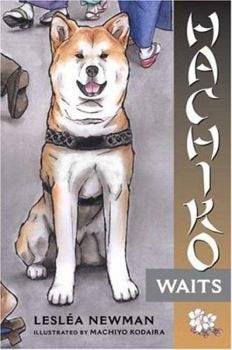
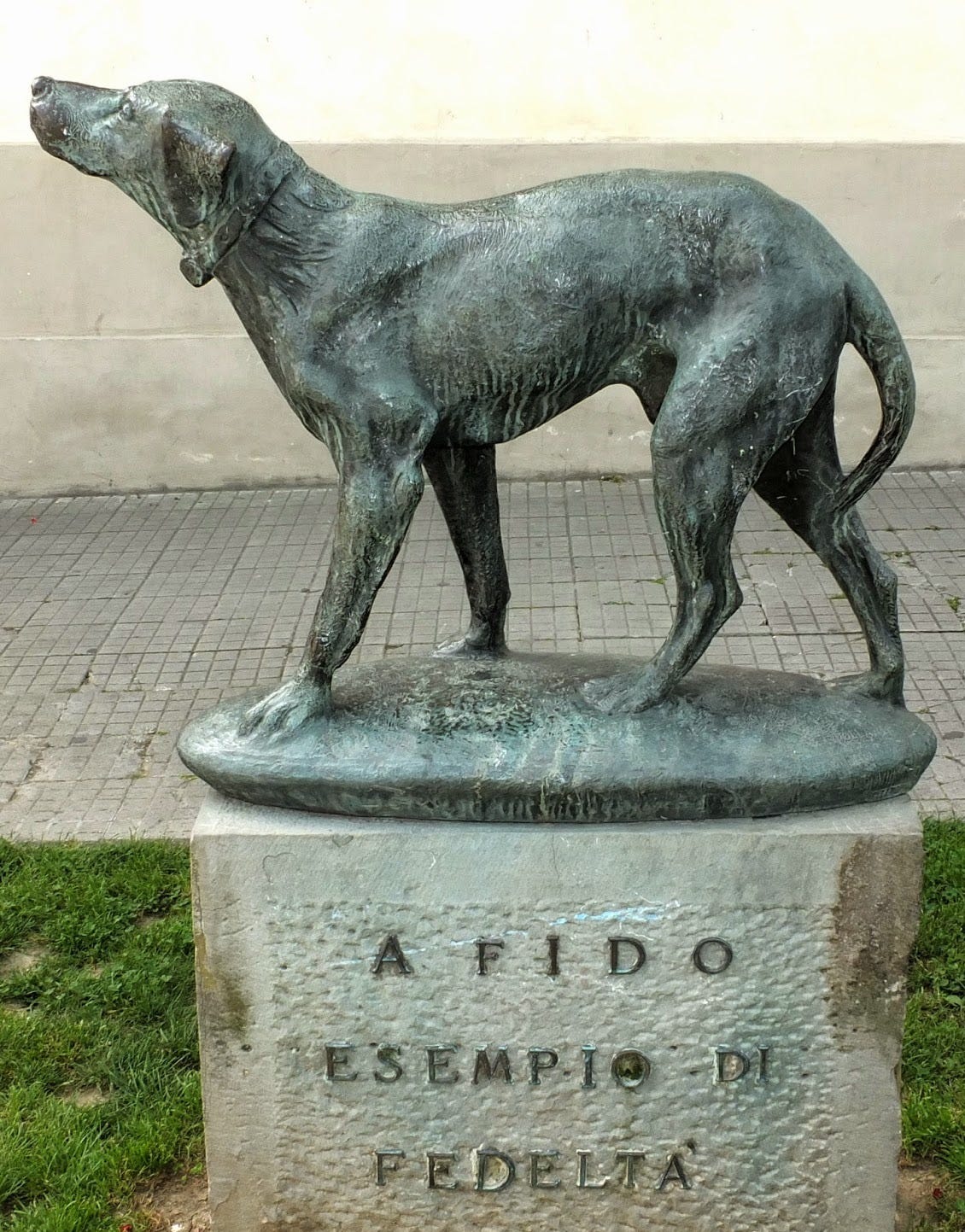
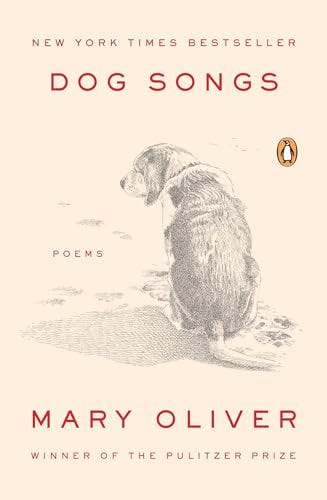
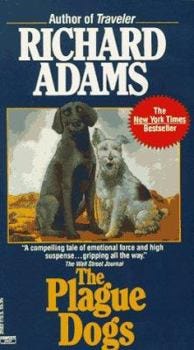
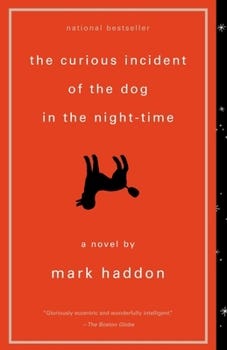
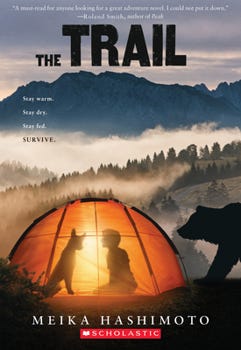

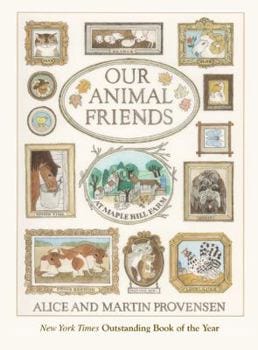
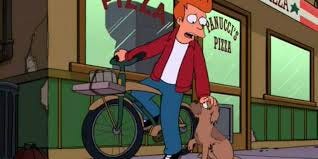
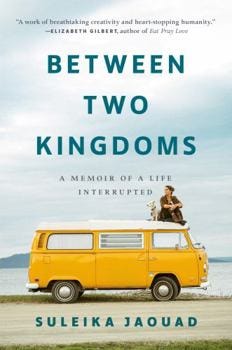
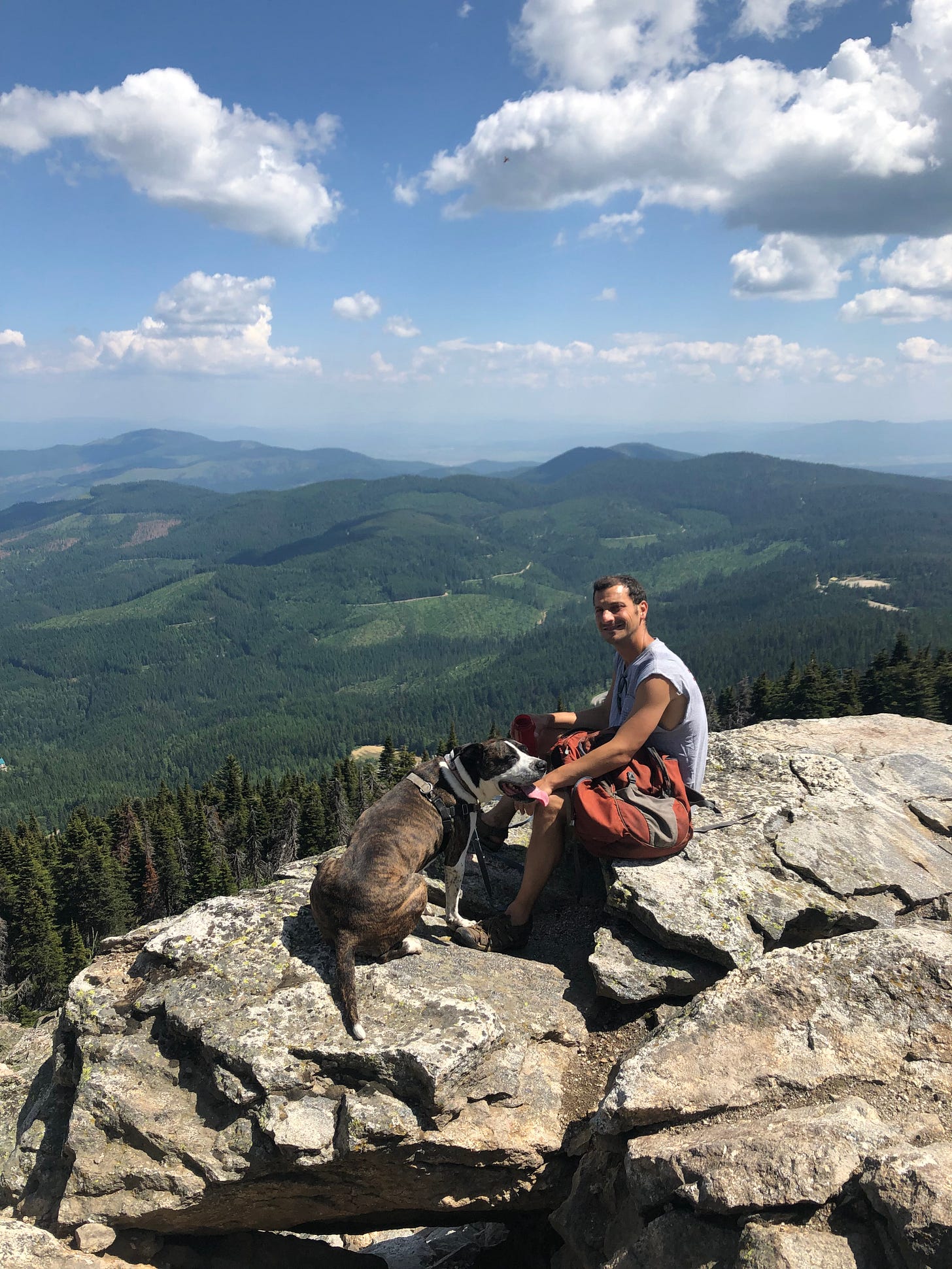
Oh, you forgot "The Art of Racing in the Rain," written from a dog's standpoint. Amazing.
Mary, if I told you how many books I have about dogs, it would mortify us both. I think I might be writing a non-fiction one, myself, actually, if the essays I’ve been working on lately all turn into something worthwhile. They have been our companions for tens of thousands of years. They may be the reason we are as we are. All praise the dog!